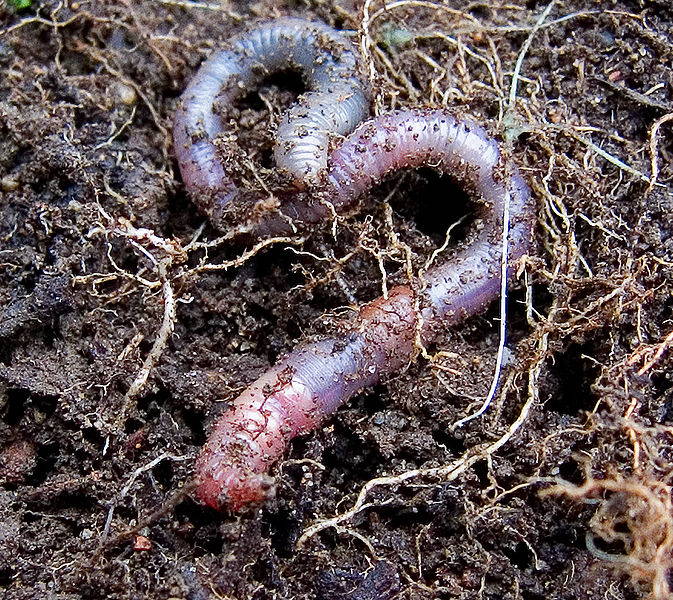By Janet Allen
It's so satisfying to dig in the soil and see all those earthworms doing their wormy job of breaking down organic matter and incorporating it into the soil. How many other little creatures have humans considered so important that we've given them nicknames like "nature's plow" or called them "free farm help?"
A quick search on "earthworms and soil" yields a multitude of articles extolling the virtues of earthworms. For many regions of our country, this is accurate ...
Shocker Number One:
... but NOT in areas that were once covered with glaciers, such as New York State! Our forests evolved WITHOUT earthworms. The ancestors of the species of earthworms we've grown up with hitched a ride with European settlers and aren't native to the region.
The work these worms do, though good for our vegetable gardens, also transforms the soil of the forest floor. Native trees and other plants in our forests evolved with a "duff" layer (i.e. the layer of fallen leaves and other organic matter), which worms consume. Removing it not only harms native forest species but also paves the way for invasive plants.
The result? Not only a decrease in plants, but also fewer insects and other small creatures that depend on those plants and on healthy forest soil. Fewer small creatures leads to fewer large creatures. And declines in forest health ultimately leads to a less-healthy planet.
But just for a moment, let's ignore the problems caused by these non-native European worms that have been here so long most people think they belong here. Let's go to ...
Shocker Number Two:
Regardless of glacial history, many regions of the country are now being invaded by a worm most everyone, when they see it, recognizes as something new: the "jumping worm" aka the "crazy worm," "Alabama jumper," or "Jersey wriggler." They're easy to recognize, as they move on top of the soil, are often larger than our familiar worms, and are super wiggly.
As damaging as our traditional non-native worms can be, these Asian invaders (in the genus Amynthas) can rival the damage done by more famous invaders that receive far more publicity. They mature faster than European worms, and they're parthenogenetic, meaning that females can reproduce without mating. The result can be huge numbers of worms that consume alarming amounts of organic matter: native wildflowers, roots of annuals, perennials, shrubs, and even lawns. What's left? Not healthy soil that supports plant and animal life, but clumpy, granular soil that easily compacts and is prone to erosion.
Shocker Number Three:
The most shocking fact: both European and Asian worms are already here in Central New York and beyond. Local yards are infested. Yours may be, too. You may not notice them in fall, and certainly not in winter, but their tiny difficult-to-see cocoons could be there, waiting to emerge next spring.
What You Can Do
- Learn more about European and Asian worms and how to identify them. Visit the following sites for more info:
- Great Lakes Worm Watch: http://www.greatlakeswormwatch.org
- The Nature Conservancy's Cool Green Science Blog https://tinyurl.com/y8f2b9w2
- Incredibly, Asian worms are actually being sold as composting worms and as fishing bait. Don't buy them! And don't dump unused "regular" fishing worms, either.
- If your yard is infested with Asian worms, don't share your plants.
- Remove Asian worms from the soil before killing them so their cocoons don't spread. Wisconsin's Department of Natural Resources recommends putting them in a plastic bag in the sun, then disposing of them in the trash.
- Check the soil in any potted plants you purchase. Only purchase compost that was heated to appropriate temperatures.
- Participate in a Great Lakes Worm Watch citizen science project. Scientists need more information about these invaders than they can collect themselves.
- Spread the word, since most people still don't know about this issue.
Janet Allen is President of the Habitat Gardening in Central New York Wild Ones chapter.
